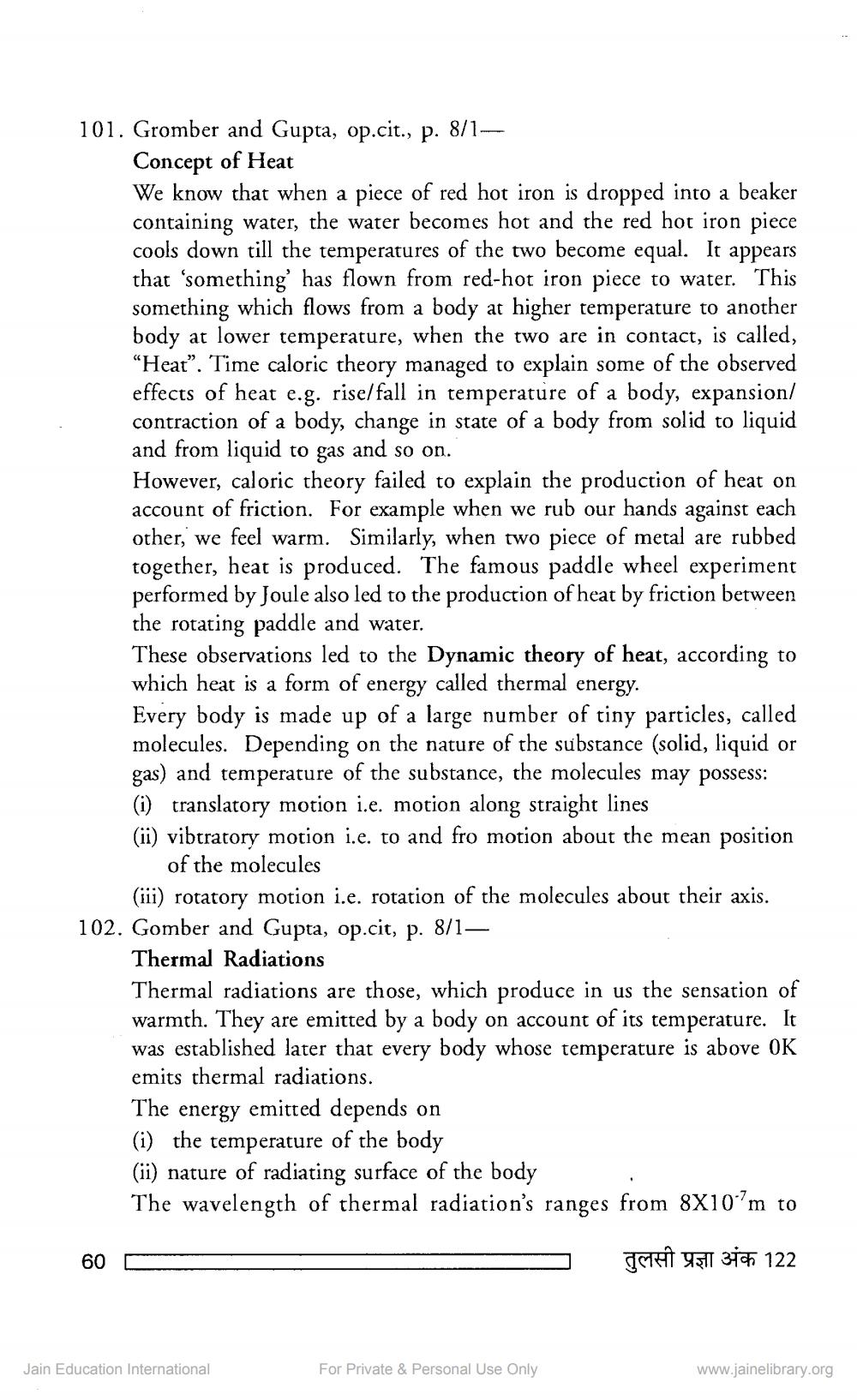________________
101. Gromber and Gupta, op.cit., p. 8/1
Concept of Heat We know that when a piece of red hot iron is dropped into a beaker containing water, the water becomes hot and the red hot iron piece cools down till the temperatures of the two become equal. It appears that 'something has flown from red-hot iron piece to water. This something which flows from a body at higher temperature to another body at lower temperature, when the two are in contact, is called, “Heat”. Time caloric theory managed to explain some of the observed effects of heat e.g. rise/fall in temperature of a body, expansion/ contraction of a body, change in state of a body from solid to liquid and from liquid to gas and so on. However, caloric theory failed to explain the production of heat on account of friction. For example when we rub our hands against each other, we feel warm. Similarly, when two piece of metal are rubbed together, heat is produced. The famous paddle wheel experiment performed by Joule also led to the production of heat by friction between the rotating paddle and water. These observations led to the Dynamic theory of heat, according to which heat is a form of energy called thermal energy. Every body is made up of a large number of tiny particles, called molecules. Depending on the nature of the substance (solid, liquid or gas) and temperature of the substance, the molecules may possess: (i) translatory motion i.e. motion along straight lines (ii) vibtratory motion i.e. to and fro motion about the mean position
of the molecules (iii) rotatory motion i.e. rotation of the molecules about their axis. 102. Gomber and Gupta, op.cit, p. 8/1—
Thermal Radiations Thermal radiations are those, which produce in us the sensation of warmth. They are emitted by a body on account of its temperature. It was established later that every body whose temperature is above OK emits thermal radiations. The energy emitted depends on (i) the temperature of the body (ii) nature of radiating surface of the body
The wavelength of thermal radiation's ranges from 8X10’m to 60 C
IMET YFIT 31 122
Jain Education International
For Private & Personal Use Only
www.jainelibrary.org




